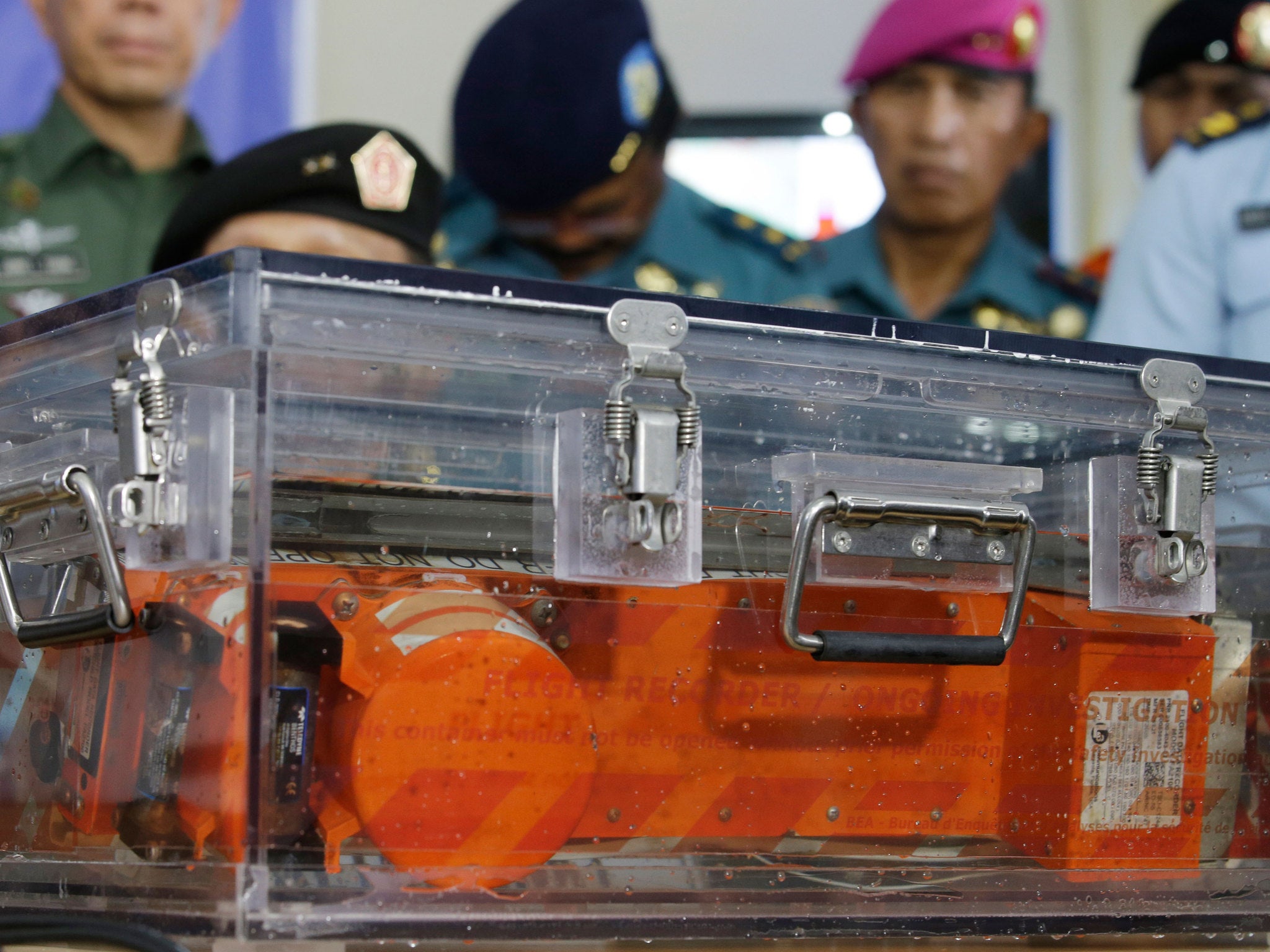Black box: What is it – and what questions will it answer about the AirAsia crash?
What will the recovered flight data recorder tell investigators about the crash of flight QX8501?

Indonesian divers have recovered the flight data recorder from the crashed AirAsia jet in the Java Sea. What will it tell investigators about the crash of flight QX8501 with the loss of 162 lives? Simon Calder explains.
I’m confused: 'black box', or 'black boxes'?
Two devices are used to record events during every commercial flight. The first is the flight data recorder (FDR), which is what the divers recovered today. It records details of commands made via the controls by the pilots, ranging from engine thrust settings to the “angle of attack” (to oversimplify, the amount the wings are tilted), as well as the readings of the aircraft’s sensors - such as the pitot tubes that record air speed.
The cockpit voice recorder (CVR) is a recording of conversations on the flight deck between the pilots, as well as interactions with air-traffic controllers and background noises such as hail on the windscreen and automatic alarms.
Both are constructed to withstand severe forces involved in a crash and the extreme heat of any fire that might follow. They are bright orange, to help investigators find them.
What has been recovered from the crashed jet - and what will it tell us?
The flight data recorder has been found, under the wreckage of a wing. It will be interrogated by investigators. They will use the information it contains to try to recreate the circumstances of the crash. They will study the interaction between the plane’s performance - as measured by the outputs of the aircraft’s sensors - and the inputs made by the pilots. The FDR may also reveal if there were any mechanical problems with the aircraft equipment.
If and when the cockpit voice recorder is recovered, what will that add to our understanding of the crash?
The practice of recording flight-deck conversations has helped safety professionals understanding the causes of many crashes in the past. CVRs can help identify critical issues in the way that humans interact with automated systems. For example, the pilots’ conversation aboard AF447, the Air France jet which crashed in mid-Atlantic in 2009 between Rio and Paris, revealed confusion about how to respond when the aircraft switched from “normal law” to “alternate law” - basically, the autopilot saying “These readings don’t compute - over to you”.
Who’s in charge?
The investigation is being led by Indonesia’s National Transport Safety Committee, but it will include observers from the planemaker, Airbus, as well as the airline and other interested parties, such as the US National Transportation Safety Board.
What’s the point of the black boxes - to assign blame?
No, although no doubt lawyers will be watching keenly. The primary purpose of the FDR and CVR is to help investigators study crashes to improve safety in the future. That is why there is such a keen focus on finding them after an incident - in case urgent safety precautions need to be taken to avoid a repeat.
Does it usually take so long to recover the 'black boxes'?
It depends on where the crash takes place. If it is on land, such as the MH17 shoot-down over eastern Ukraine in July, then the FDR and CVR are usually relatively easily located (though on that occasion they had to be extricated from separatist-controlled territory). At sea, it can prove very difficult. The recorders are equipped with “pingers” that send out locator signals in the event of a crash, but these are required to operate for only one month before the battery runs out.
The search for AF447 in the Atlantic took nearly two years. And MH370, which went missing on a scheduled flight from Kuala Lumpur to Beijing in March 2014, has not been found.
Should there be a ground-based system instead?
Keeping all the relevant data for a flight in recorders that are on board the plane has been likened to carrying a hard-drive back-up in the same bag as a laptop. Given the wide availability of technology to provide streamed data from aircraft to ground stations, it is likely that pressure will grow for at least some basic details of the aircraft’s position, altitude, speed and heading to be constantly available - basically, so search teams know where to start looking. While airlines are reluctant to incur the extra cost involved, recent incidents make a strong case for using 21st-century communications to improve safety.
Join our commenting forum
Join thought-provoking conversations, follow other Independent readers and see their replies
Comments